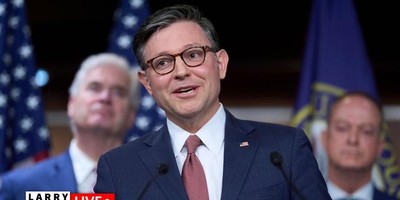INDEPENDENCE PASS, Colo. – A perilously narrow road, open only during summer, leads to the Continental Divide at 12,095 feet and a breathtaking peak.
Nearly 2,000 miles to the east, a different but equally symbolic peak stands at the heart of America’s democracy: At just over 555 feet, the Washington Monument honors the country’s first president and Revolutionary War commander who gave up the life of a gentleman farmer to lead a band of “scrabble” to win their liberty and the country’s independence.
More than miles and heights separate “Main Street” Americans from those who govern them. Their disconnect is so deep, so wide, that filling it is hard to imagine.
“Here, our vision of the American dream looks far different than it does in Washington,” says Milan Ralich of Weirton, W.Va., who works in the local Sherwin-Williams paint store.
Dressed in a crisp blue shirt embroidered with the store’s logo and his name, Ralich points to the town’s massive steel mill which straddles the highway at several points.
“Thirty-eight years were spent in that plant, and you worked hard every day,” he says. “It provided a good life.”
Once employing 14,000, the mill is down to a few hundred workers. Ralich works at the paint store part-time to make ends meet because of a scaled-back pension.
From the Colorado Rockies to small fishing towns in Massachusetts and all points in between, Americans finally may have the “change election” they sought in 2008.
In less than a year, this columnist has traveled 6,609 miles, interviewed 432 people registered as or identifying with Democrats in 17 states, and written about scores of races for U.S. Senate and House seats and governor’s mansions.
Recommended
In the process, I lost a transmission, wore out four new tires (then promptly flattened two replacement tires), cracked a windshield, broke a passenger window, had emergency surgery, was chased by a funnel cloud on the Great Plains, staggered through two blizzards, was pelted by hail, wilted in record heat, and even saw a lot of locusts (although a farmer assured me that it wasn’t a swarm).
All along the country’s “blue highways” (those secondary roads marked blue on U.S. maps) Americans spoke about their disappointment in the change they so proudly supported in 2008 – sometimes whispering for fear of being labeled a racist, sometimes shouting at Tea Party rallies.
In coffee shops, on street corners, at farms and factories, the narrative was always the same: How could such great promise have let the country down so much, so quickly?
Pundits inside Washington’s beltway talk of how angry America is. They seem incredulous that Americans somehow find this historic president’s administration anything but exceptional.
What’s exceptional is the blame coming from Washington, which only deepens the divide between the elite and Main Street.
The pundits blame Republicans – or, when they feel particularly vicious, “tea-baggers.”
President Obama blames everyone but himself, shaking a finger at Republicans and Tea Party supporters for stirring up the anger. Last week he and Vice President Biden started to blame their own supporters, insisting that they need to “buck-up” and vote.
“Why should we?” wondered Canton, Ohio, native Cheryl Guy as she and husband Rudy visited Fort Necessity in Western Pennsylvania. A registered nurse, a Democrat and someone who is very disappointed with Obama, she has no intention of supporting Democrats in the coming midterm election; neither does her husband.
Americans voted for change in 2008 in record numbers. Voters of every age, color, shape and size, in red states and blue ones, registered as Republicans and Democrats and independents, pulled the lever for something different. They bought into the dream that Obama was not elite; he was for the middle class and would champion reform.
What they got was the guy they voted against in 2004: John Kerry.
Obama is no different, no less out of touch, than the Kerry that America watched windsurf before the 2004 election – the same man who said last week that one of the reasons Democrats will lose this year is because “we have an electorate that doesn’t always pay that much attention to what’s going on, so people are influenced by a simple slogan rather than the facts or the truth or what’s happening.”
Here’s where Kerry and Obama are both wrong: The electorate that was influenced by a simple slogan – “Yes, we can” – in 2008 actually is very well-informed.
This time it isn’t voting for a dream but for its pocketbook.
And if Republicans are lucky enough to win, they’d best remember that those voters will hold them accountable.

























Join the conversation as a VIP Member